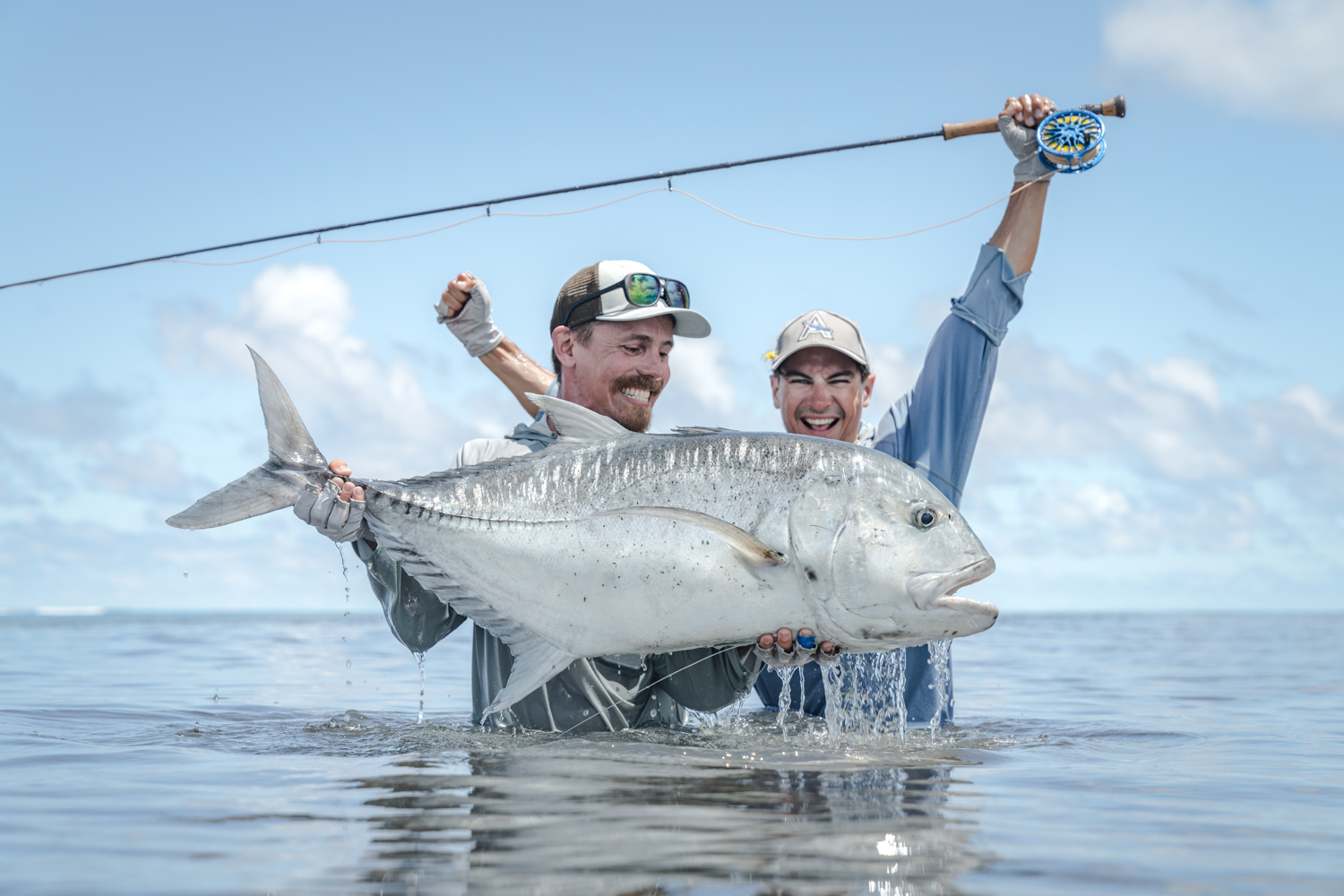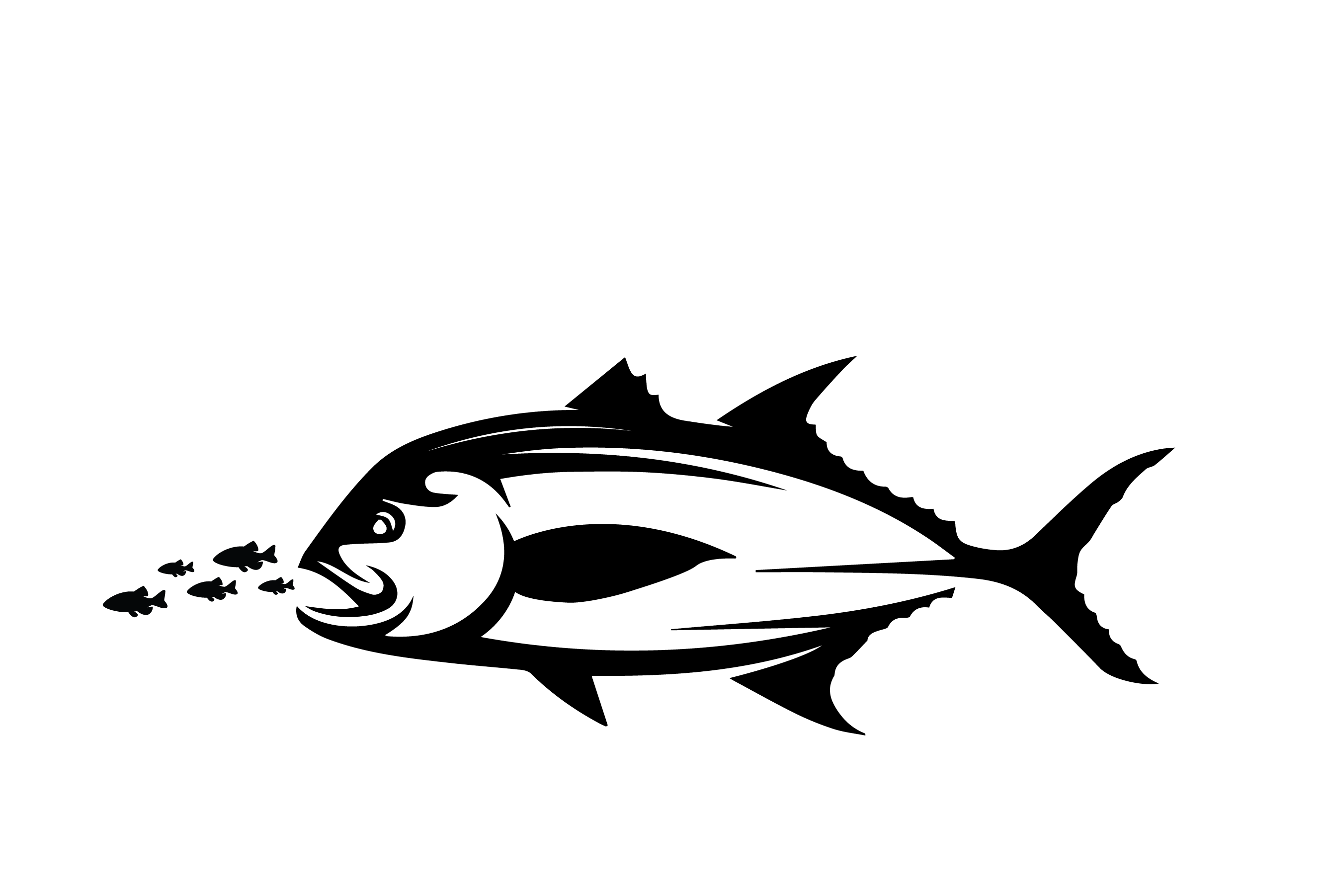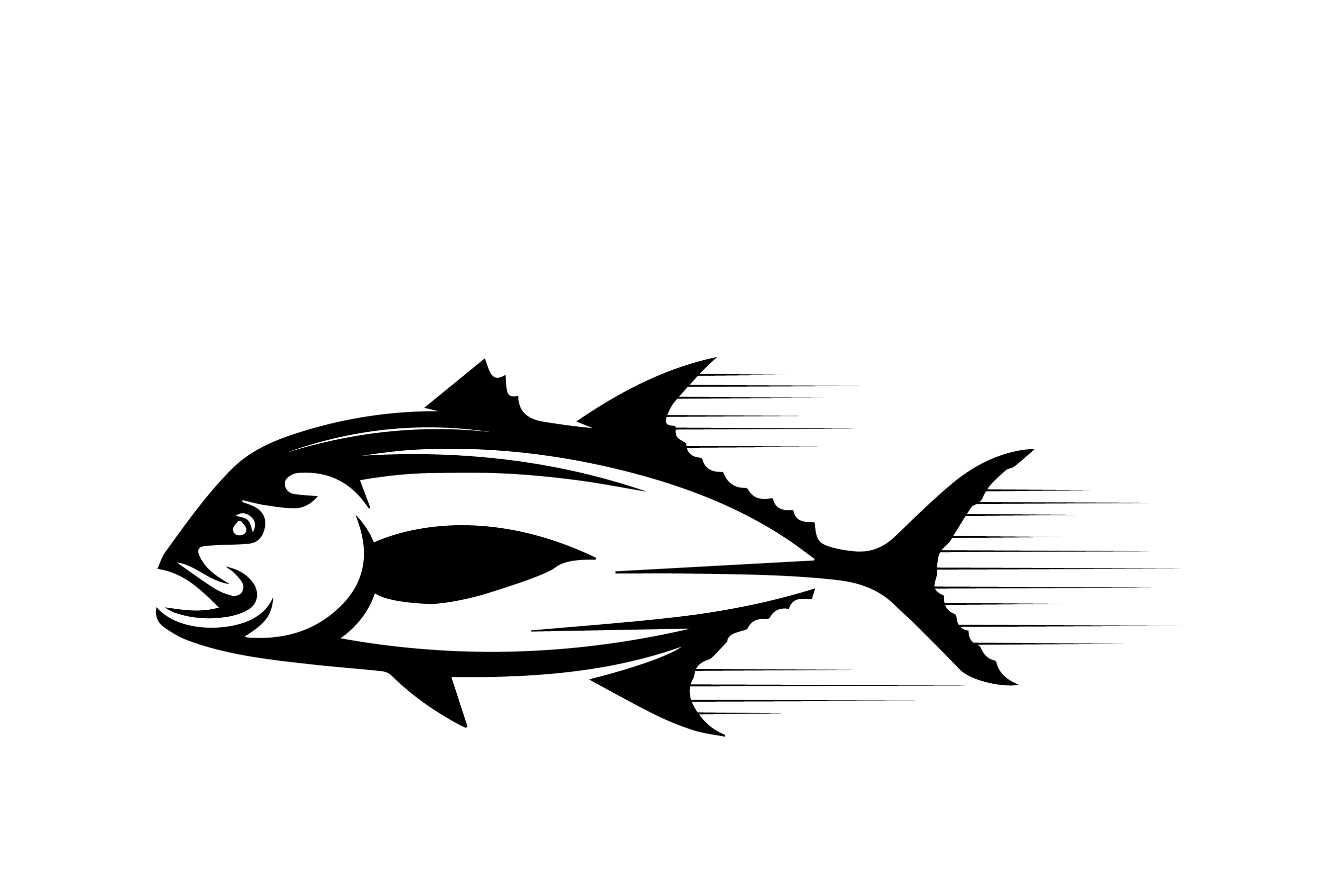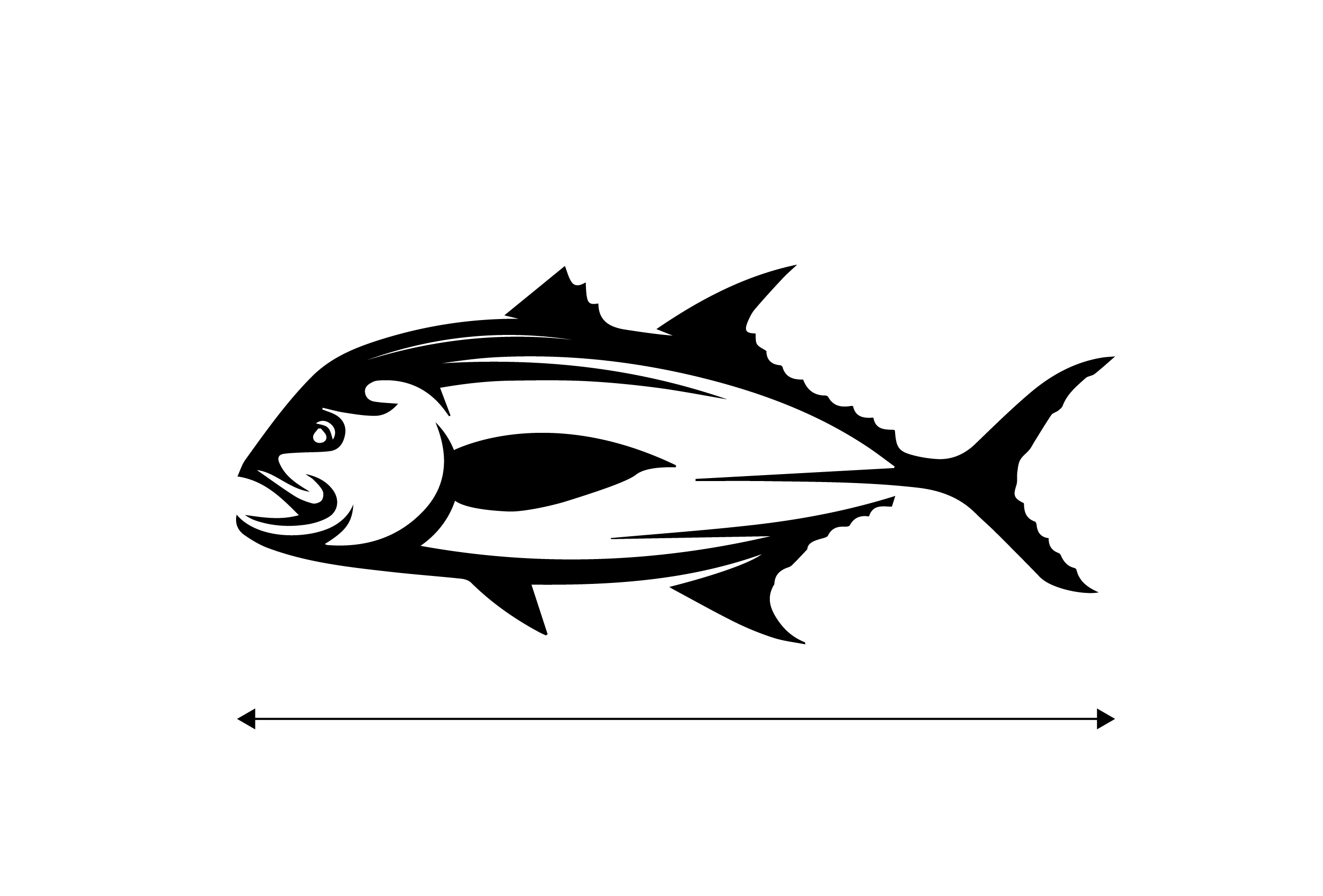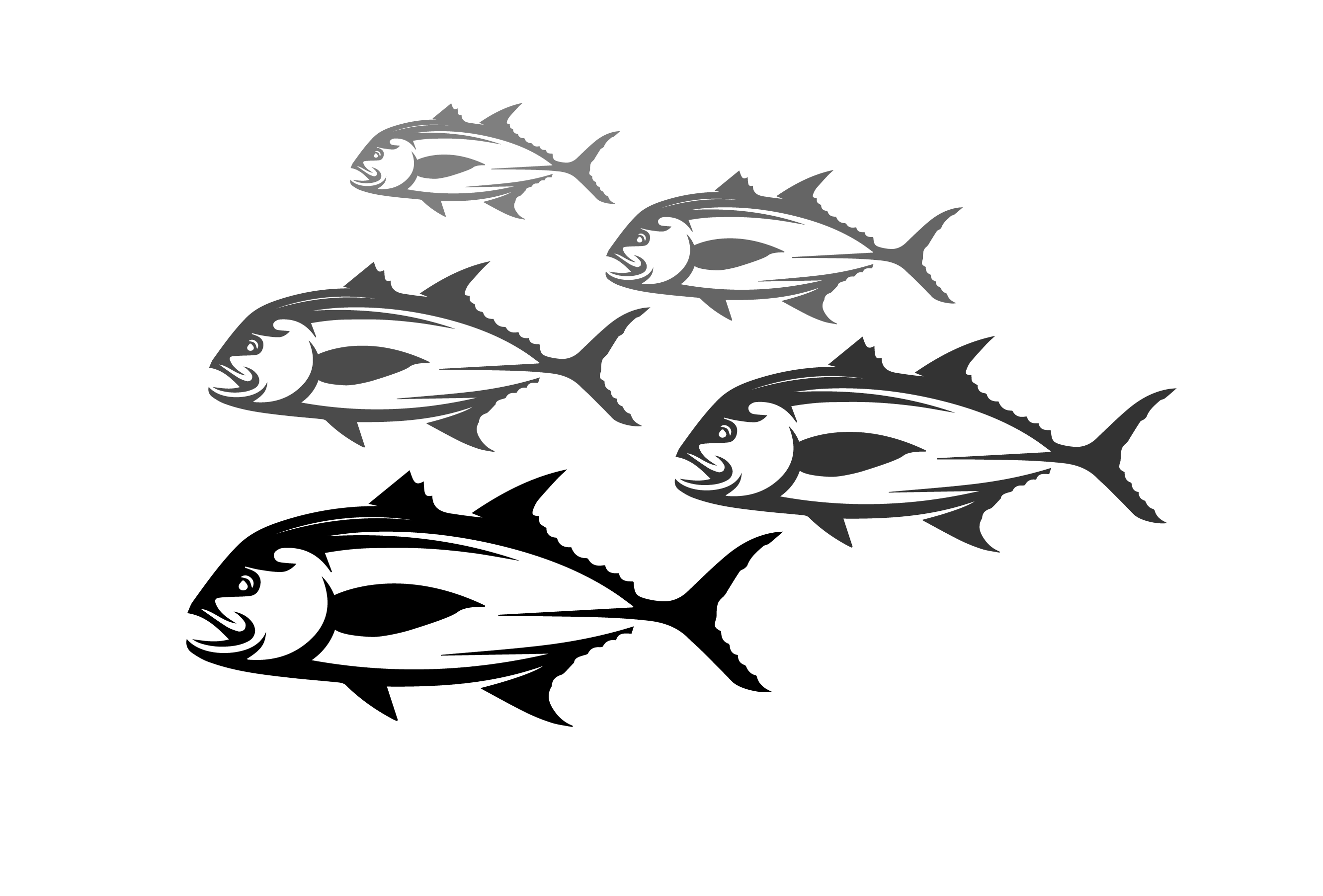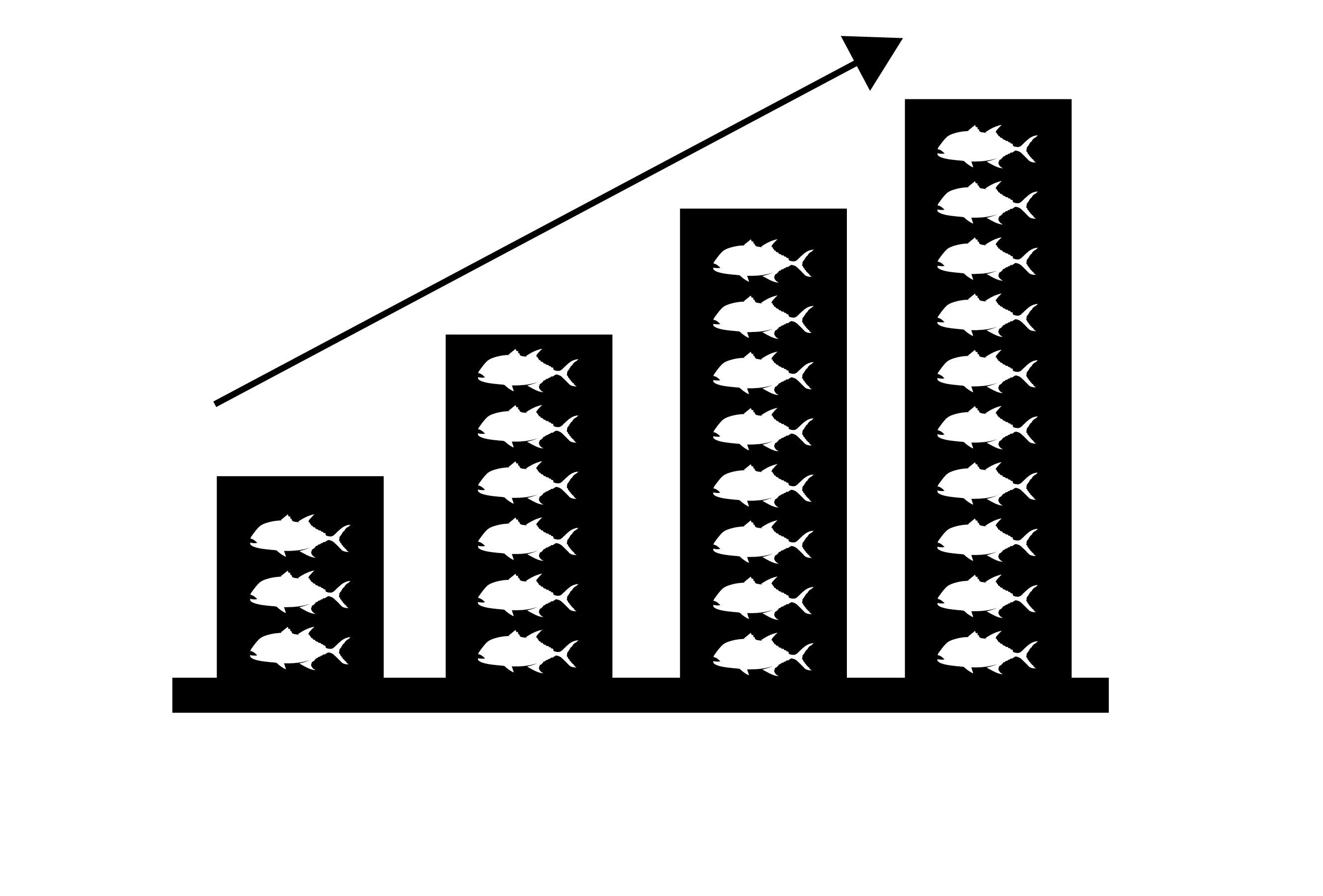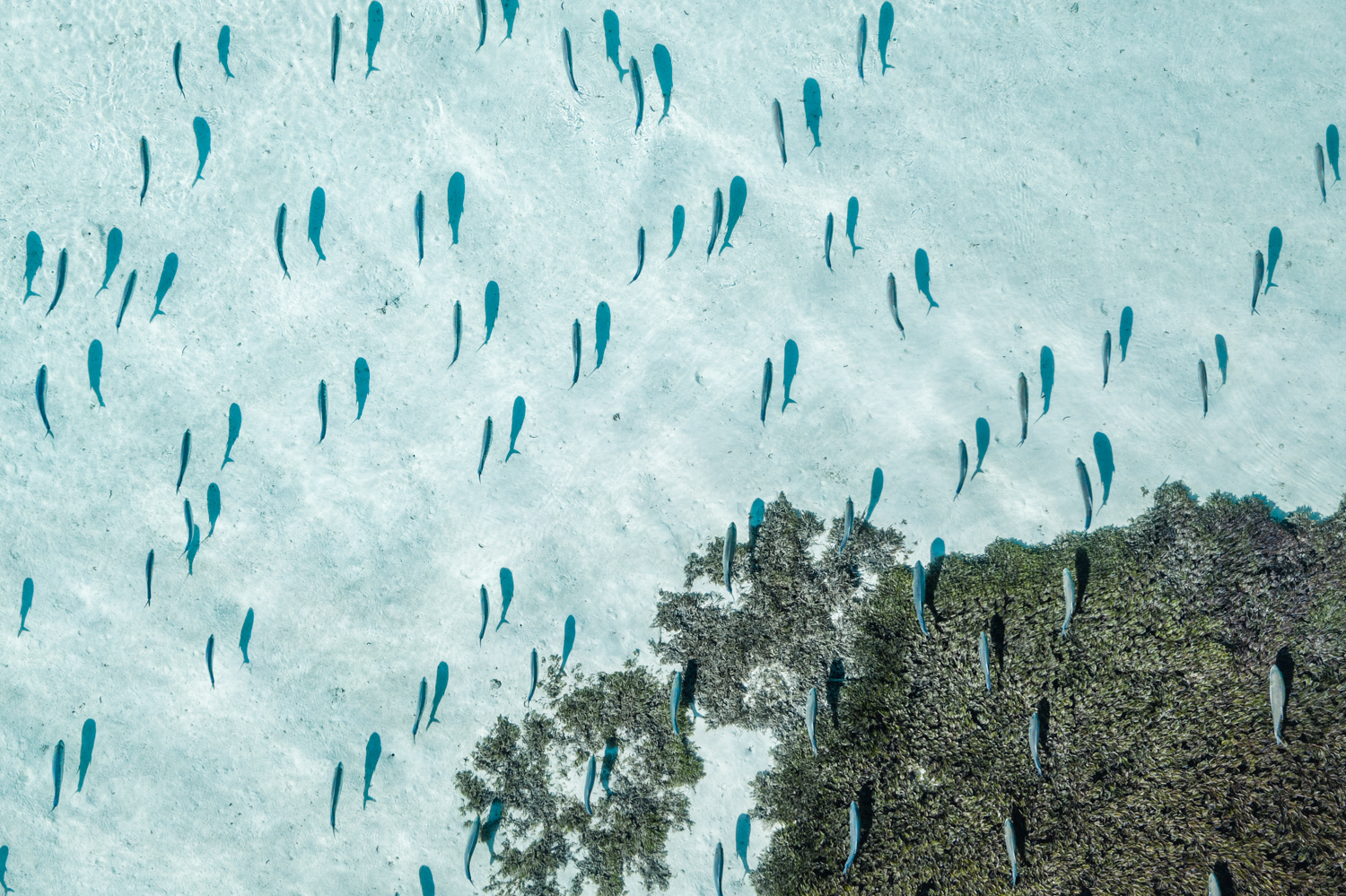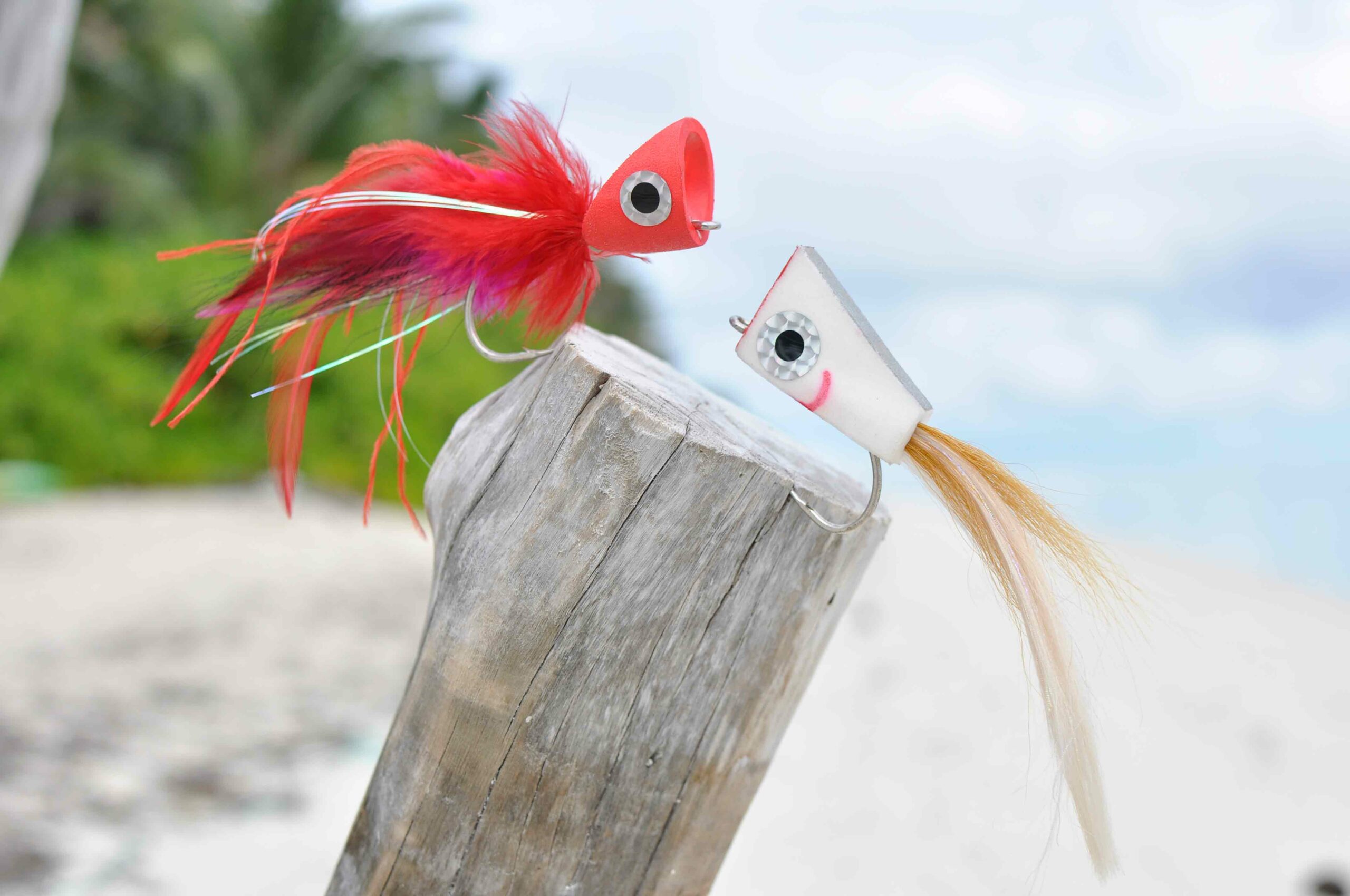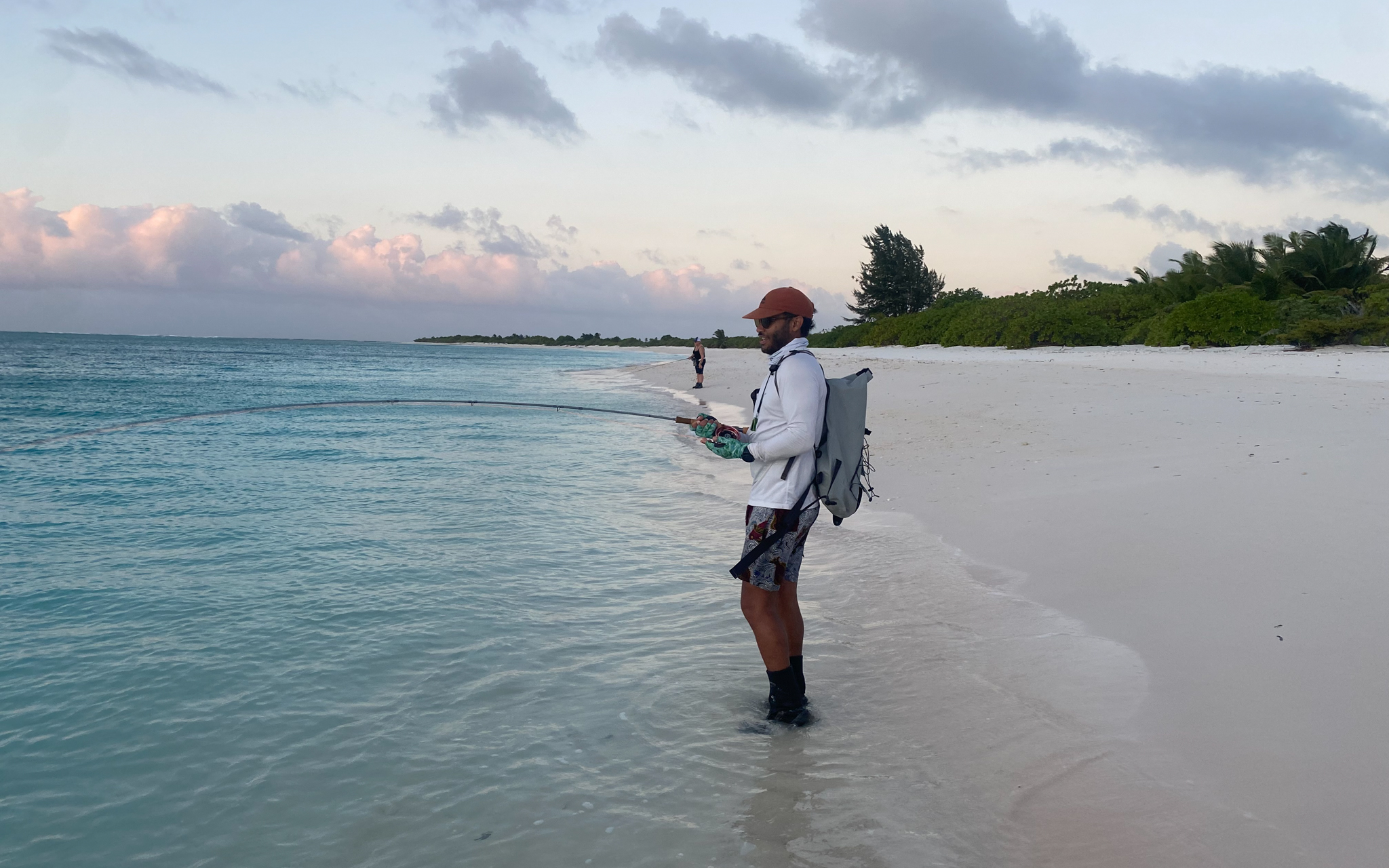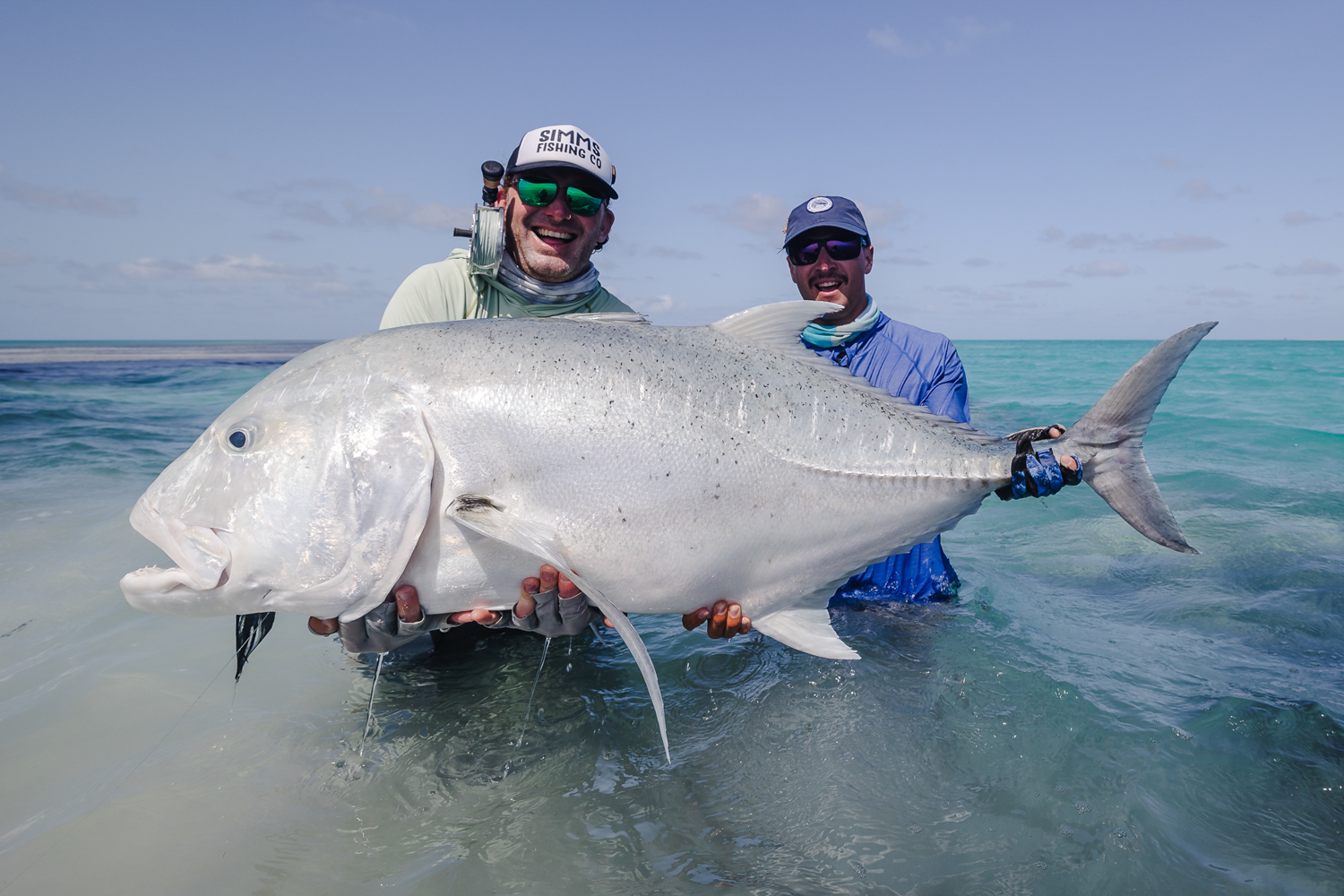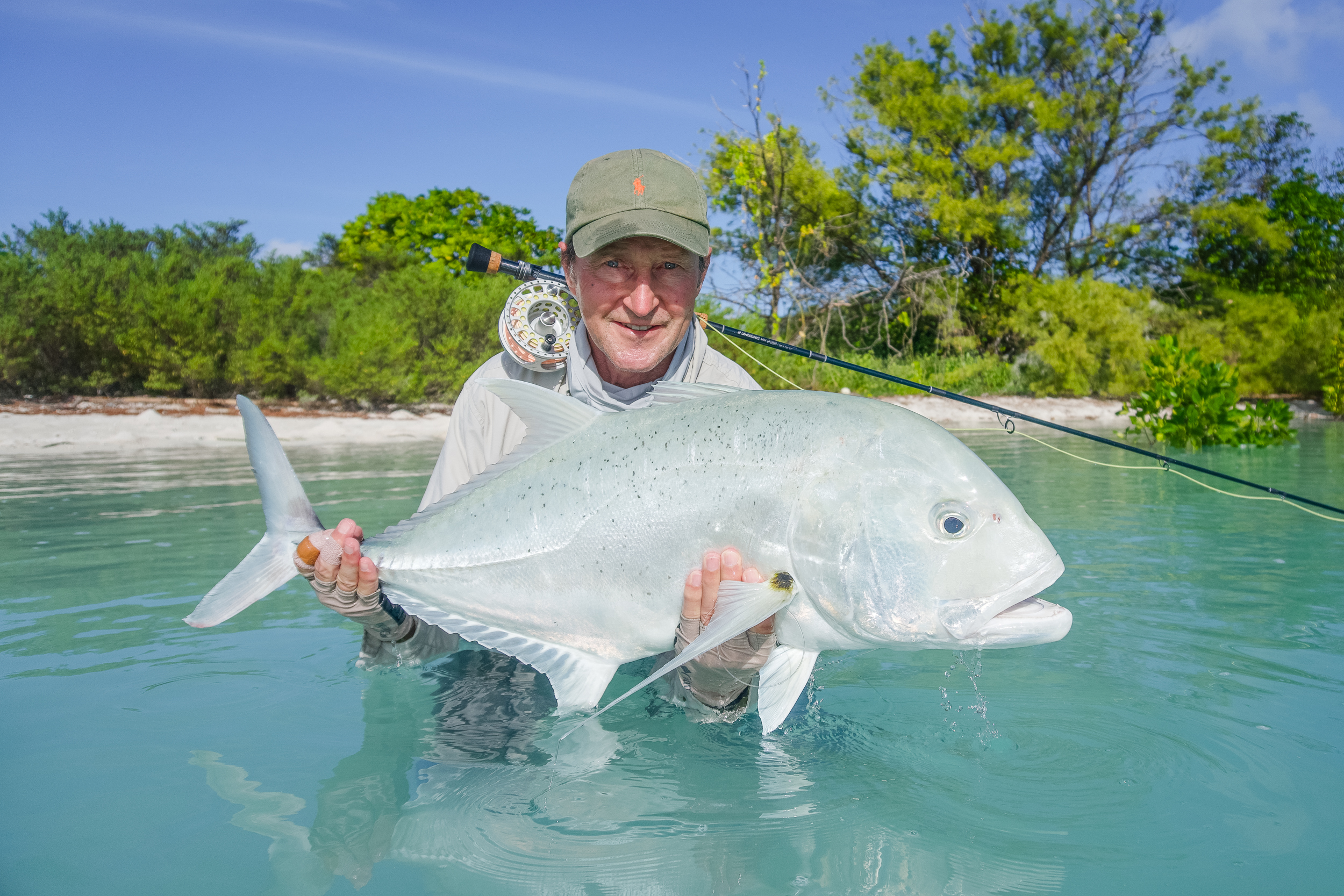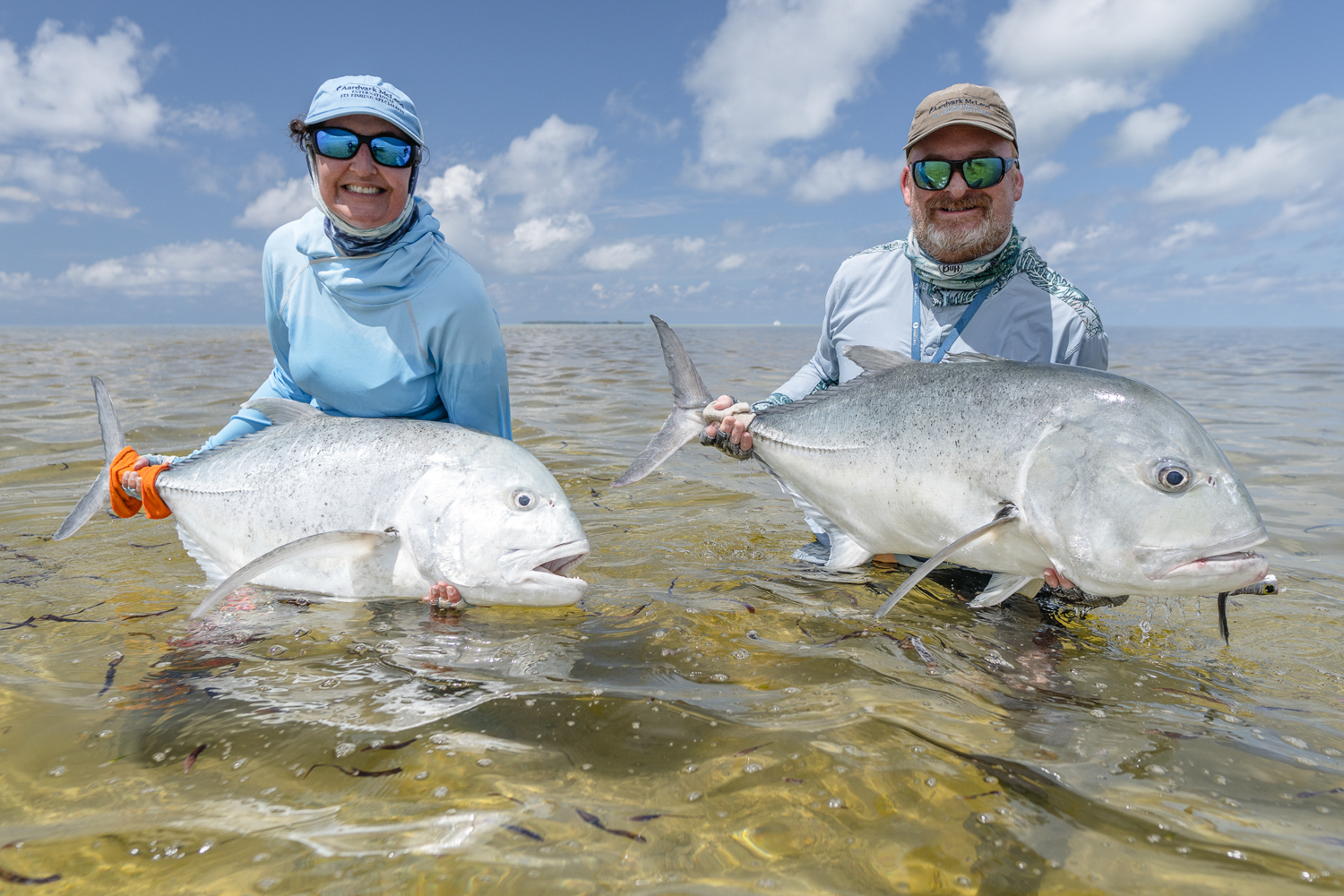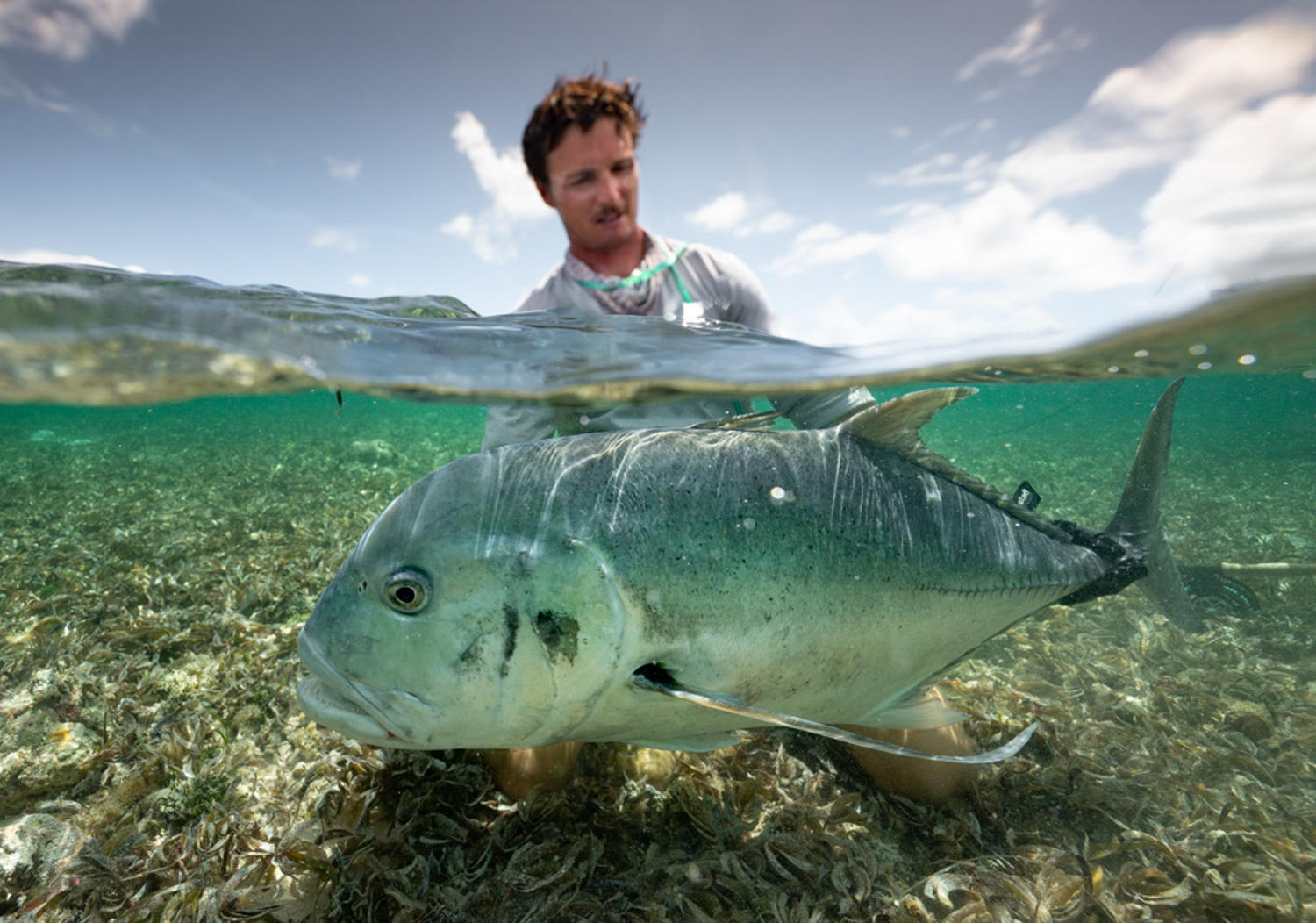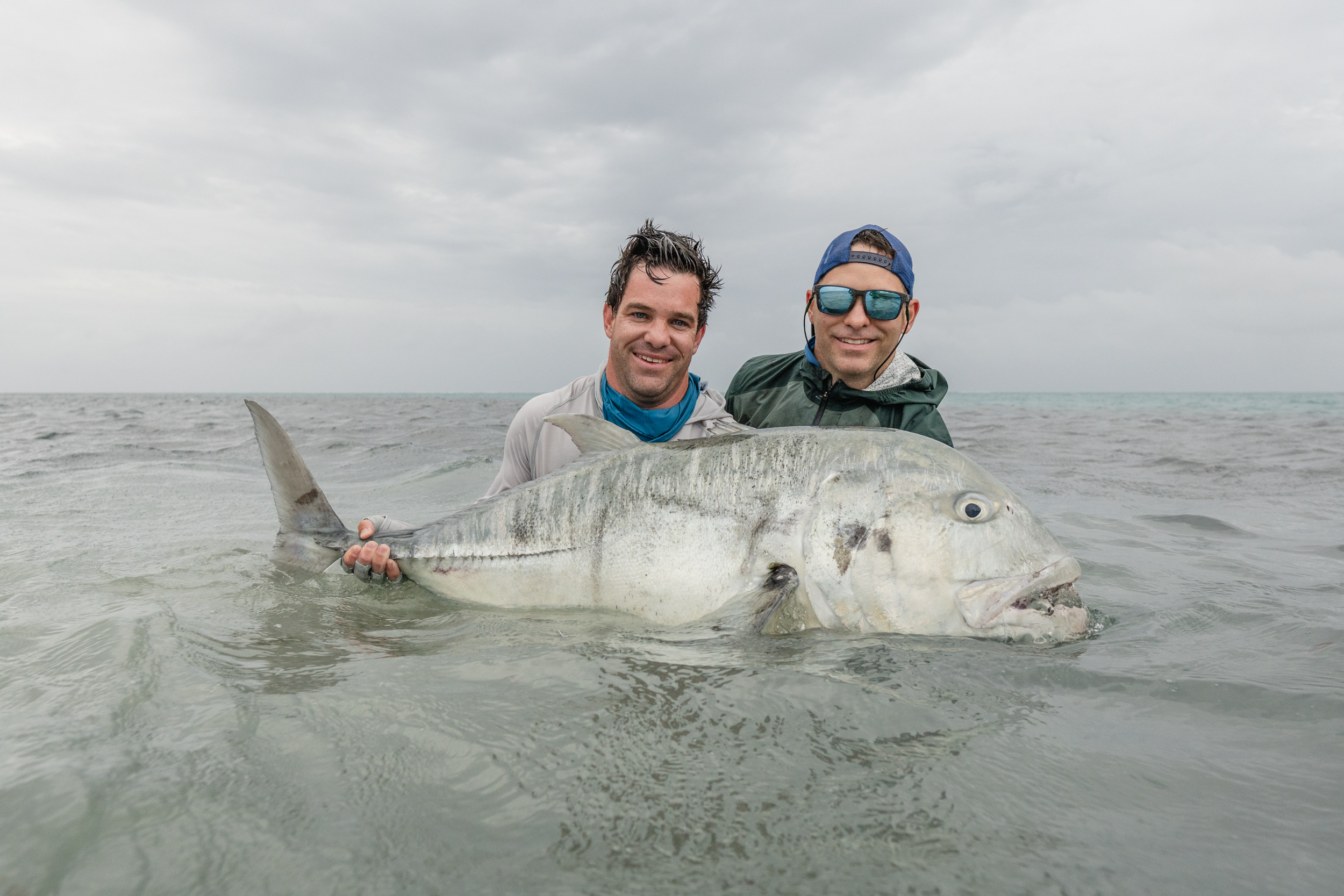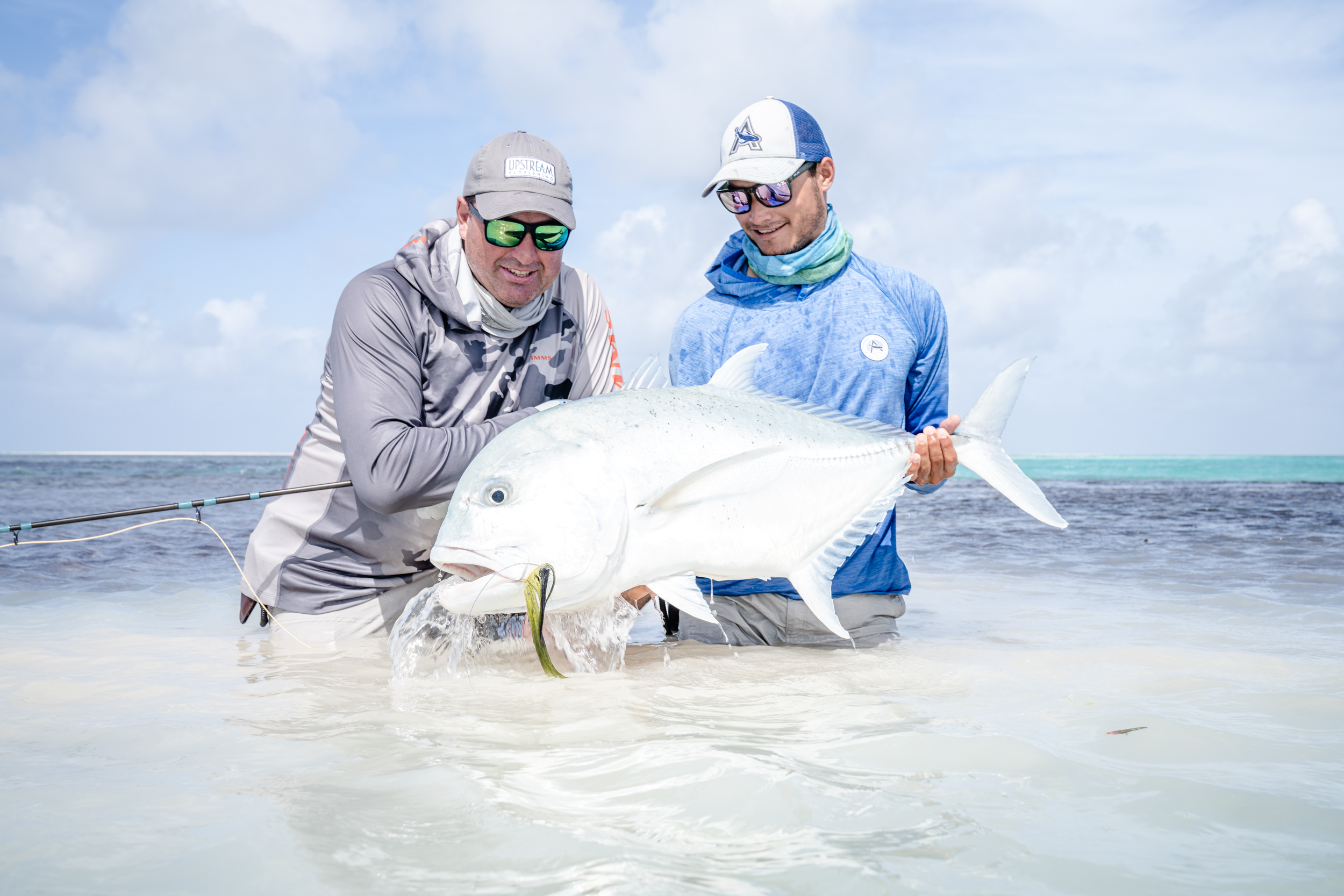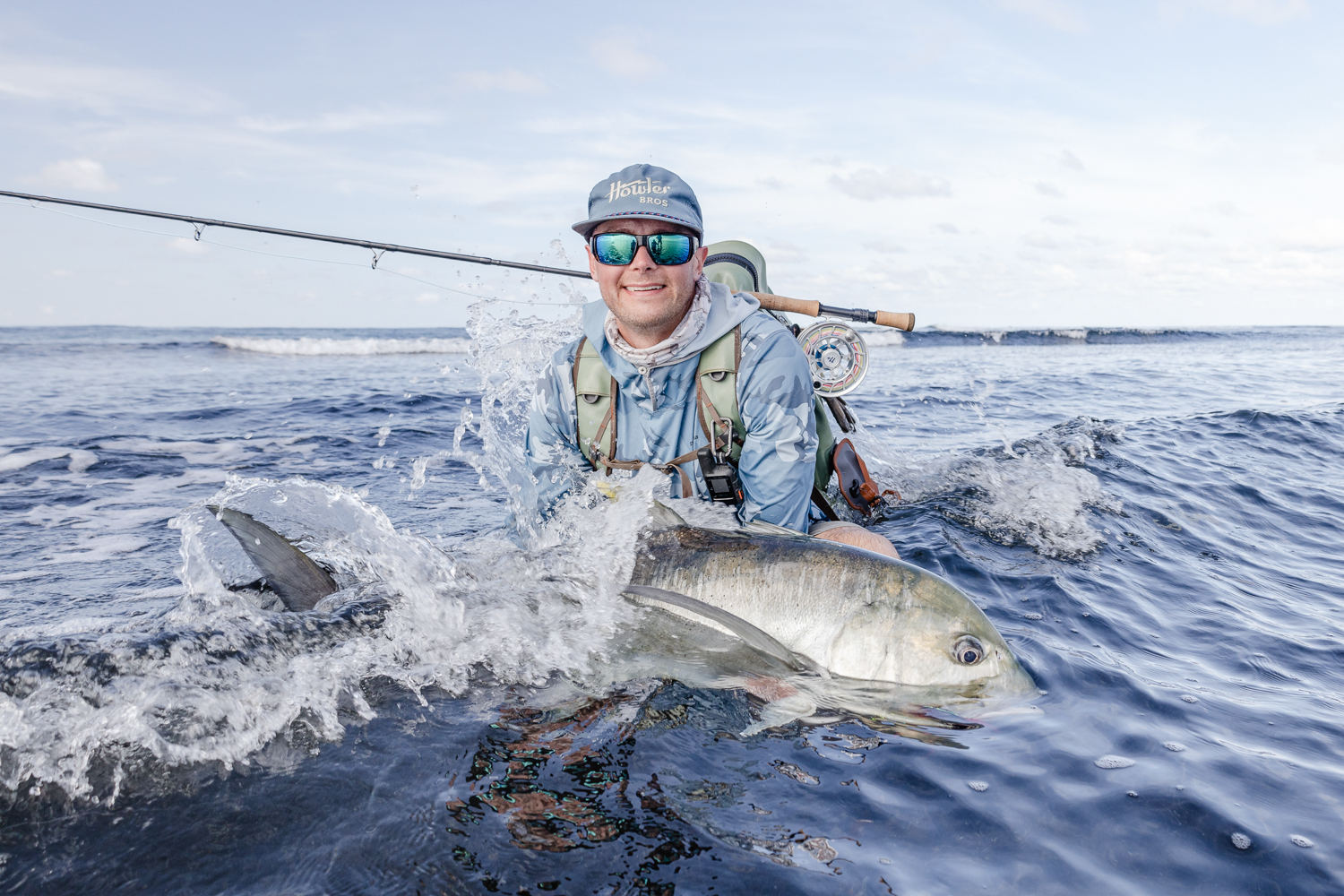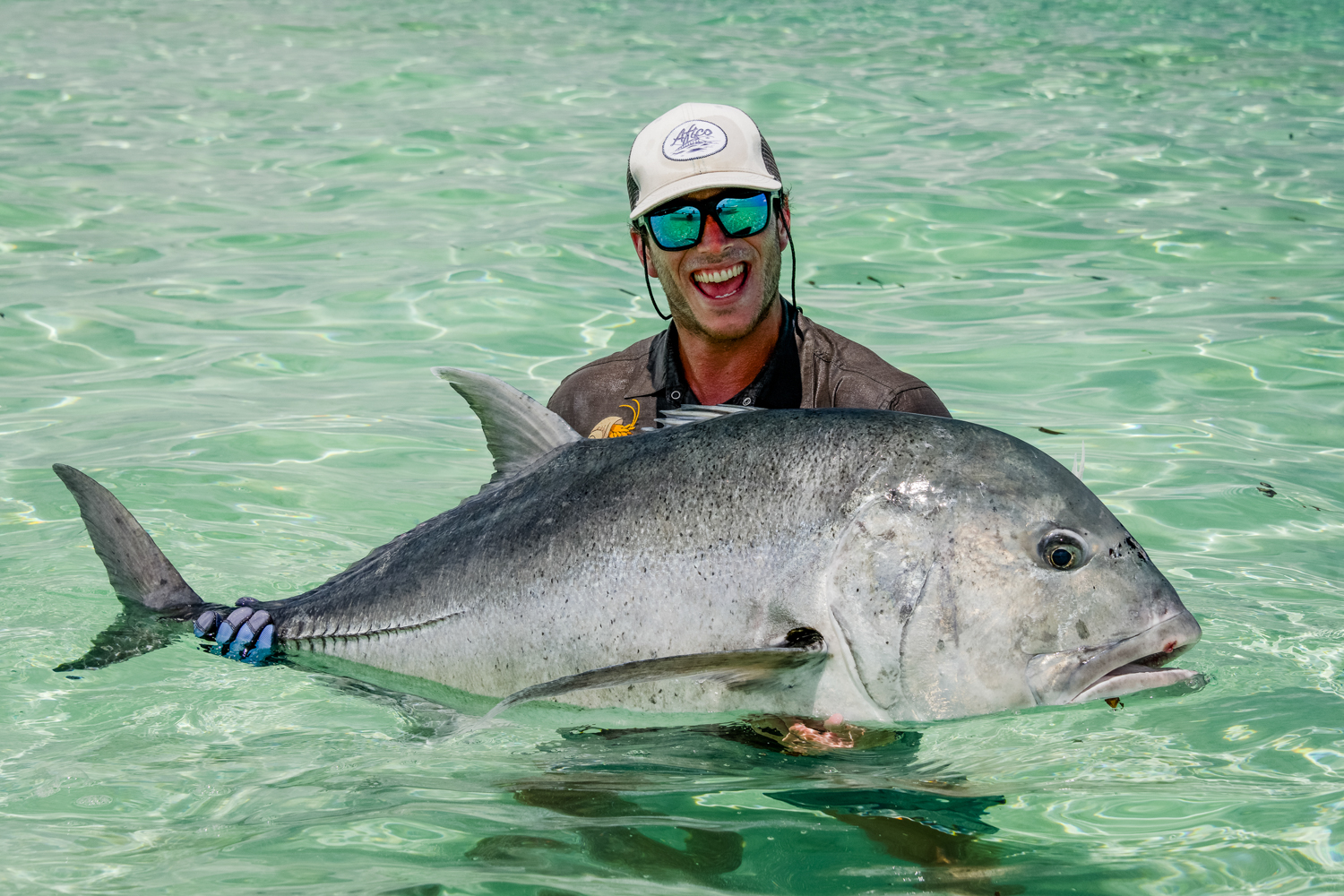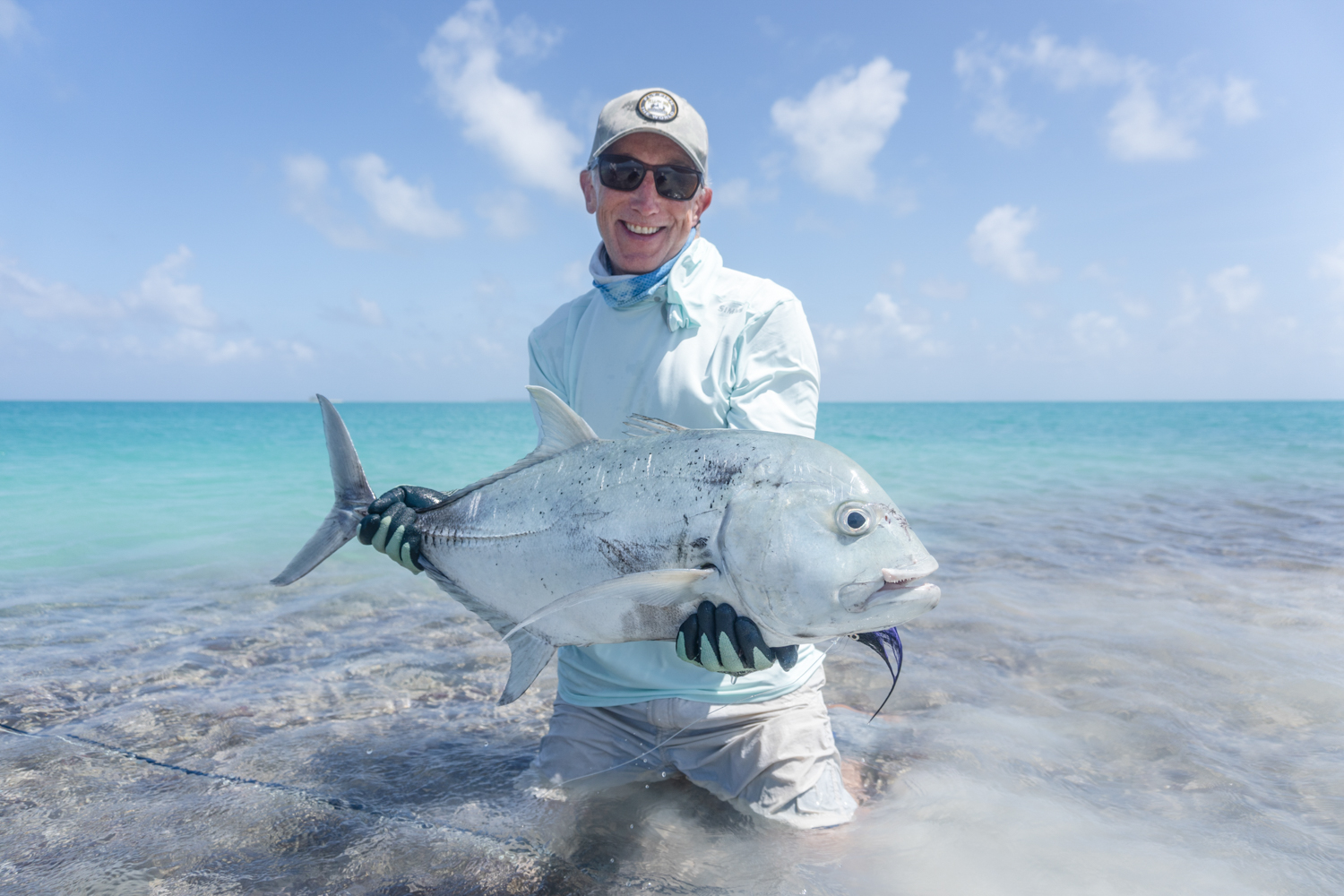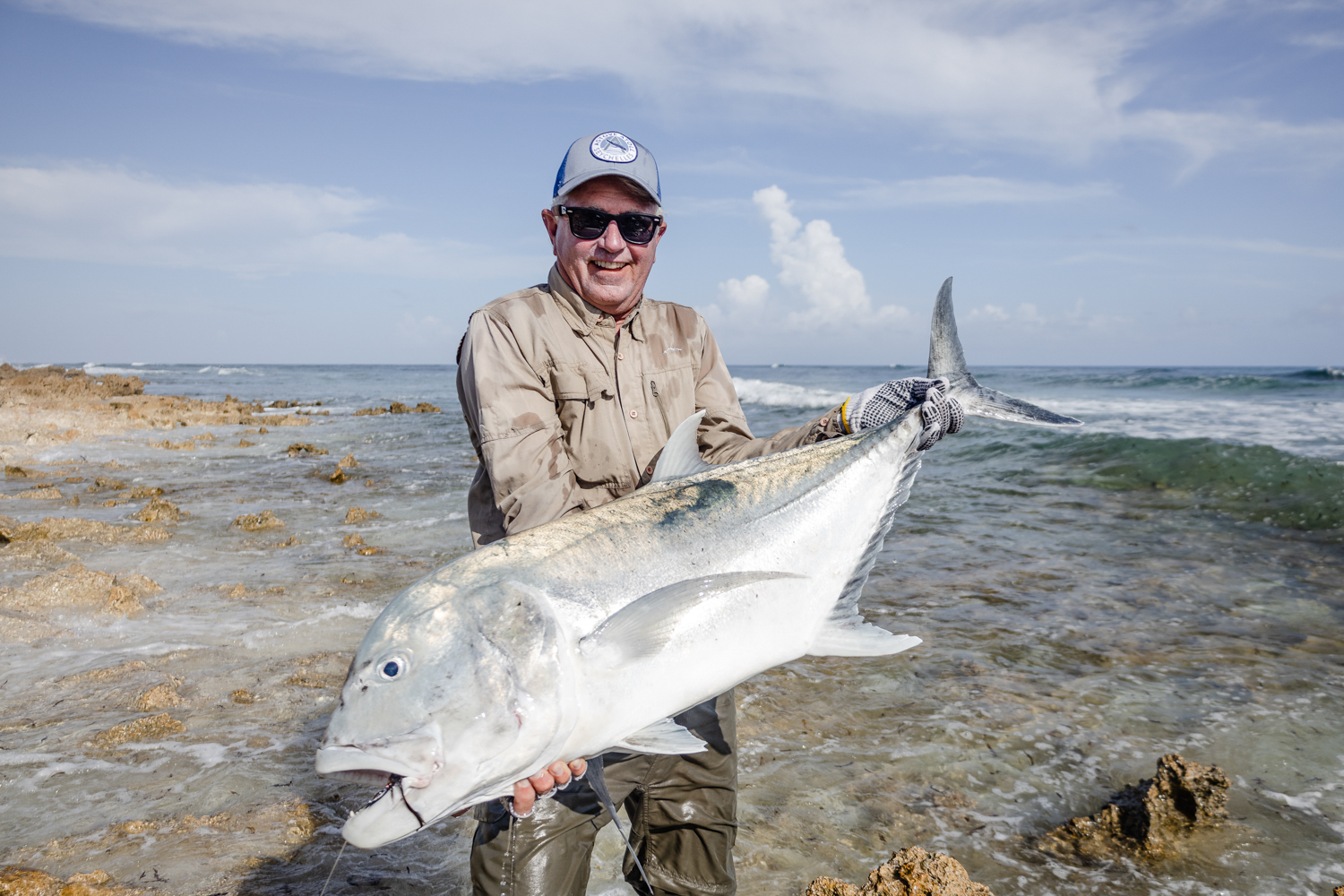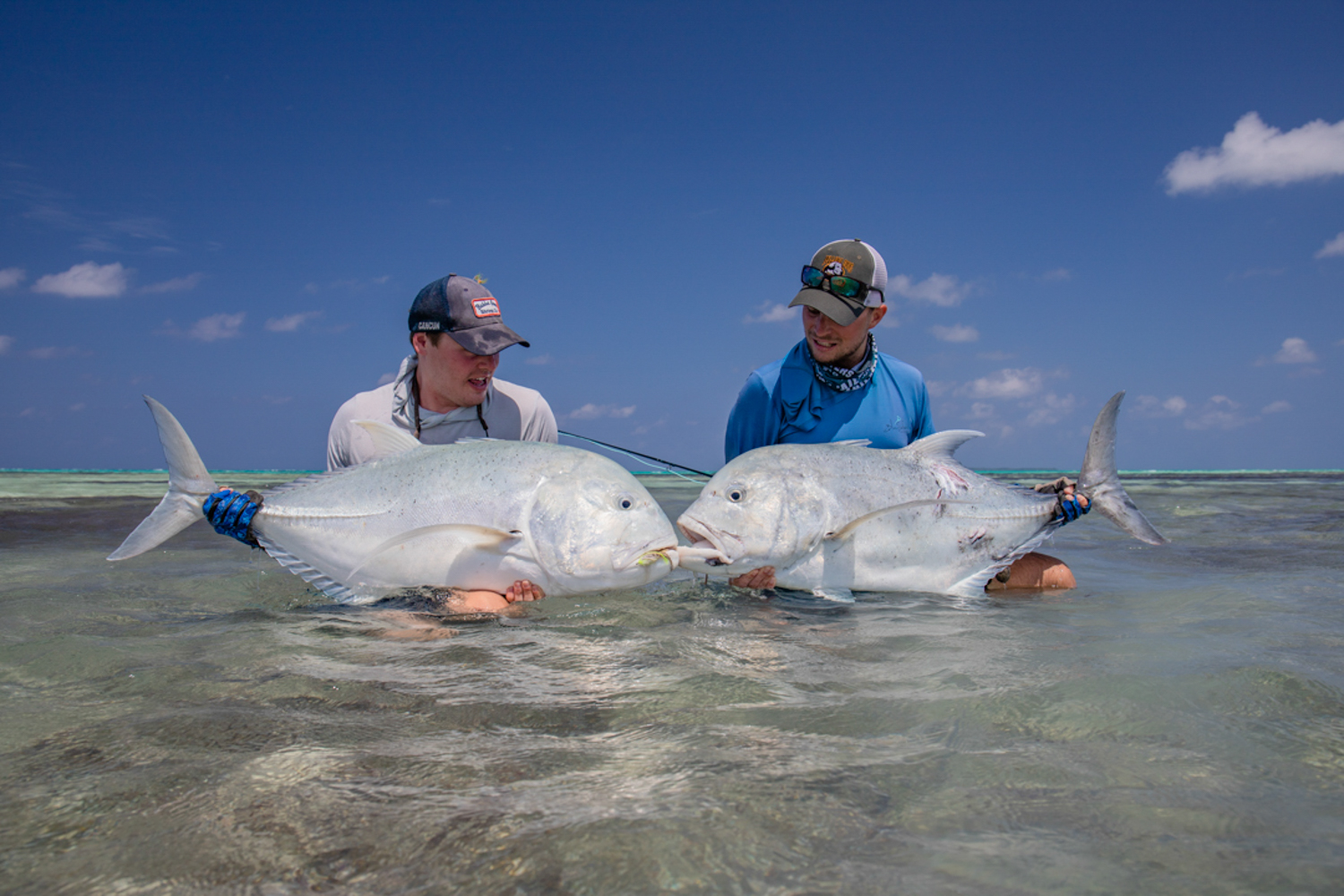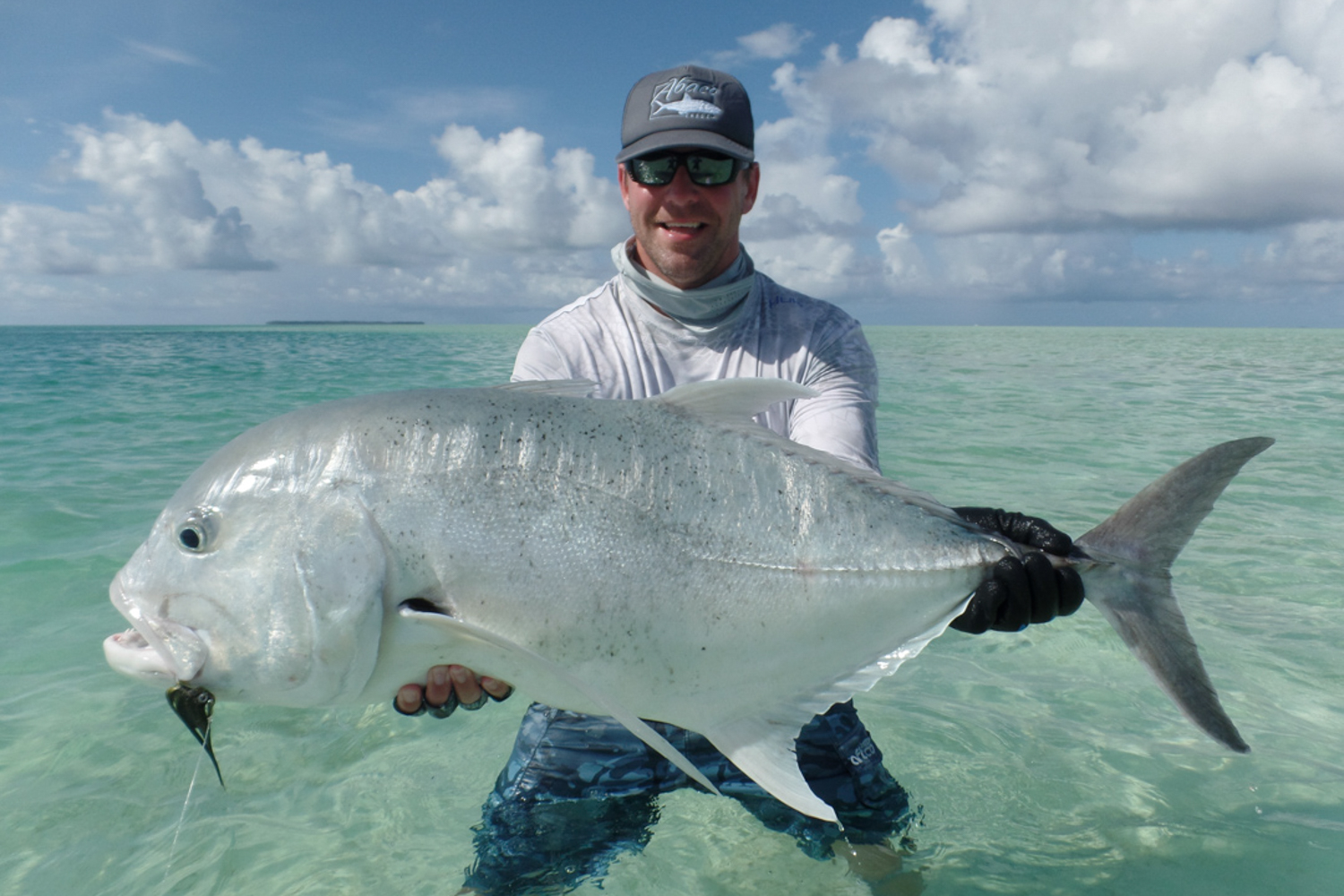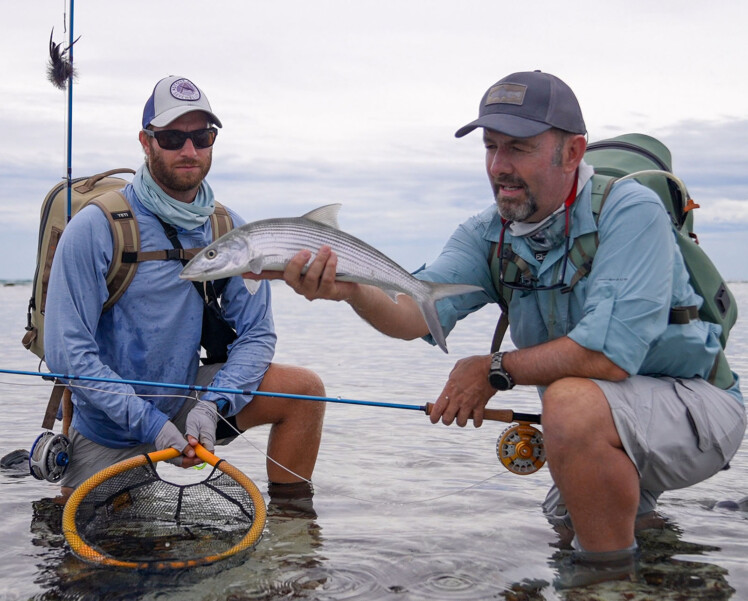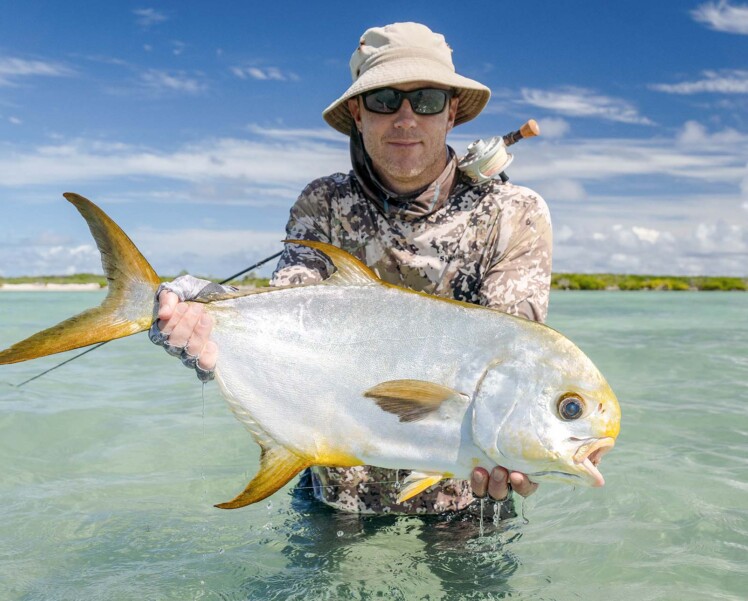Everything about GTs screams ‘big’. Big fight, big flies, big fish, so naturally, you need a big rod too, therefore 12 weight fly rods are used to target giant trevally. Your rod needs to be paired with a high-quality large arbour saltwater series reel with a strong, smooth drag to match. The reel should be loaded with three hundred yards of 80 lbs braid. Once hooked, these fish love to head straight for the coral or drop off into the deeper water, which often results in a lost fish. Having a good fishing rod that you can pull very hard is necessary, therefore, any rod with a strong butt section is recommended.
A similar approach to giant trevally fly choice can be taken as with big barracuda. The fly choice should be dictated by the area you are fishing and the bait species that inhabit that locality. Brush flies, sempers and poppers are all effective. As a general rule, lighter coloured flies should be used on the white sand e.g. tan and white, as these lighter colours are more representative of species such as mullet, small trevally and bream. Darker coloured patterns are more suitable for surf areas and coral fingers e.g. red, black, and brown, making a realistic impression of various types of reef dwellers, grouper, snapper and emperors.
Here are 3 flies that will always be in our guides’ boxes.


